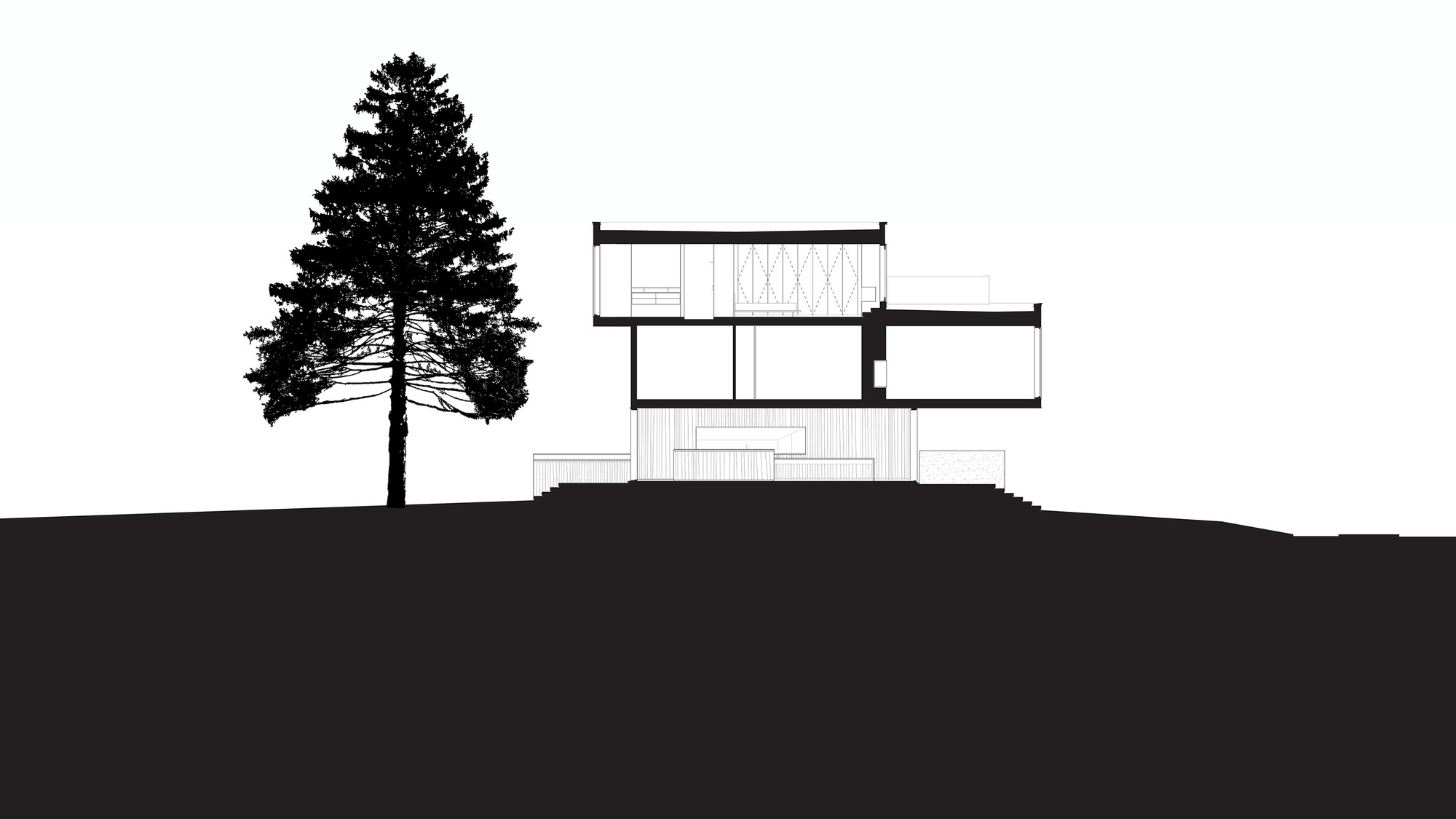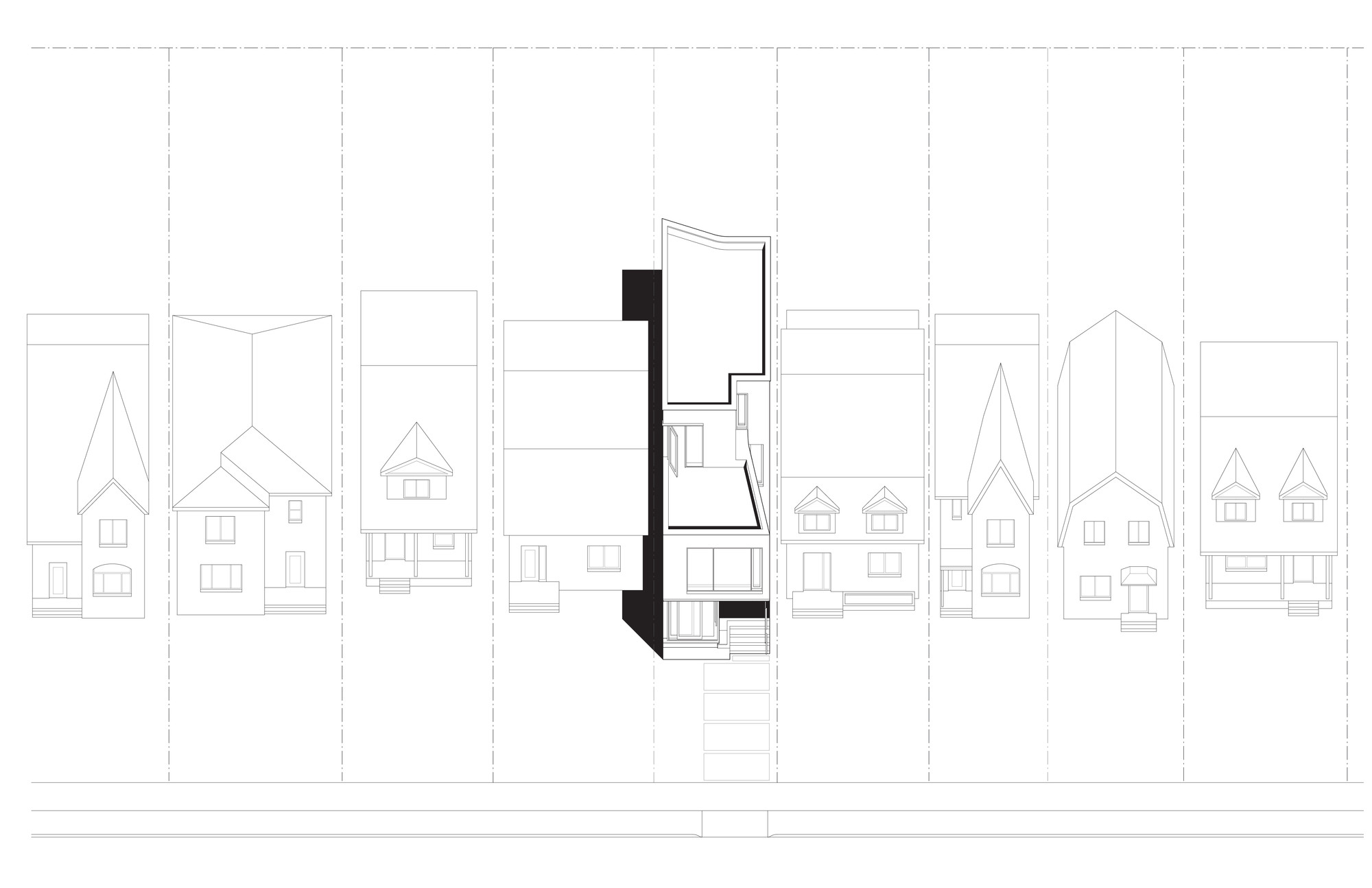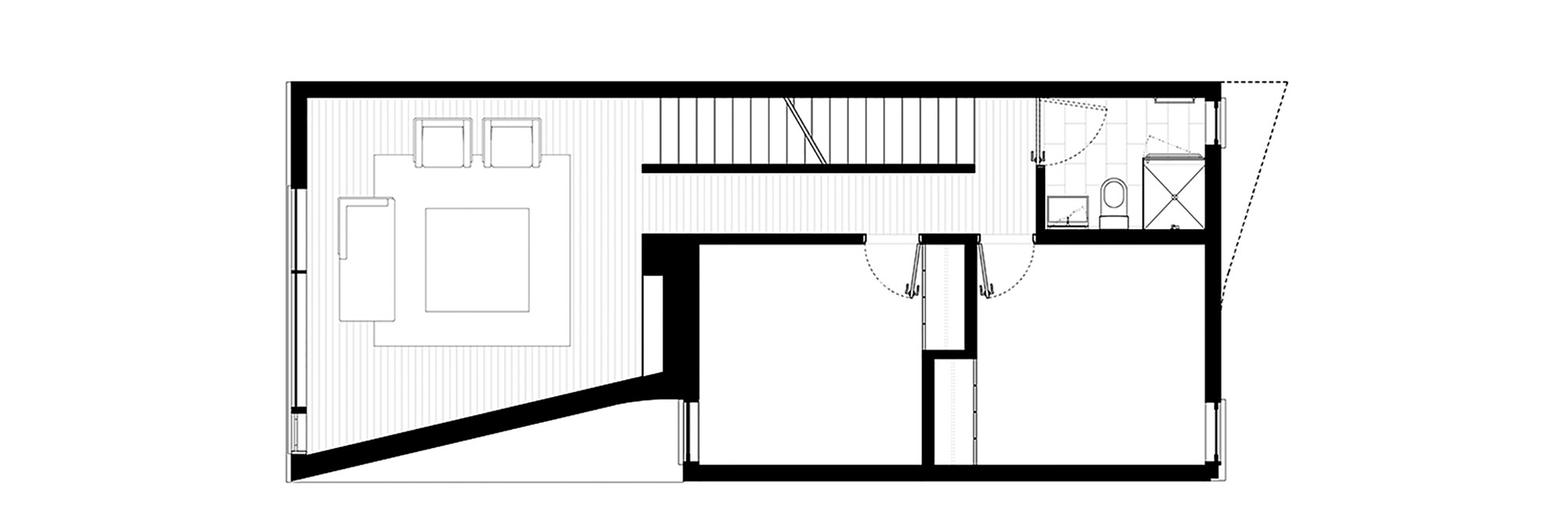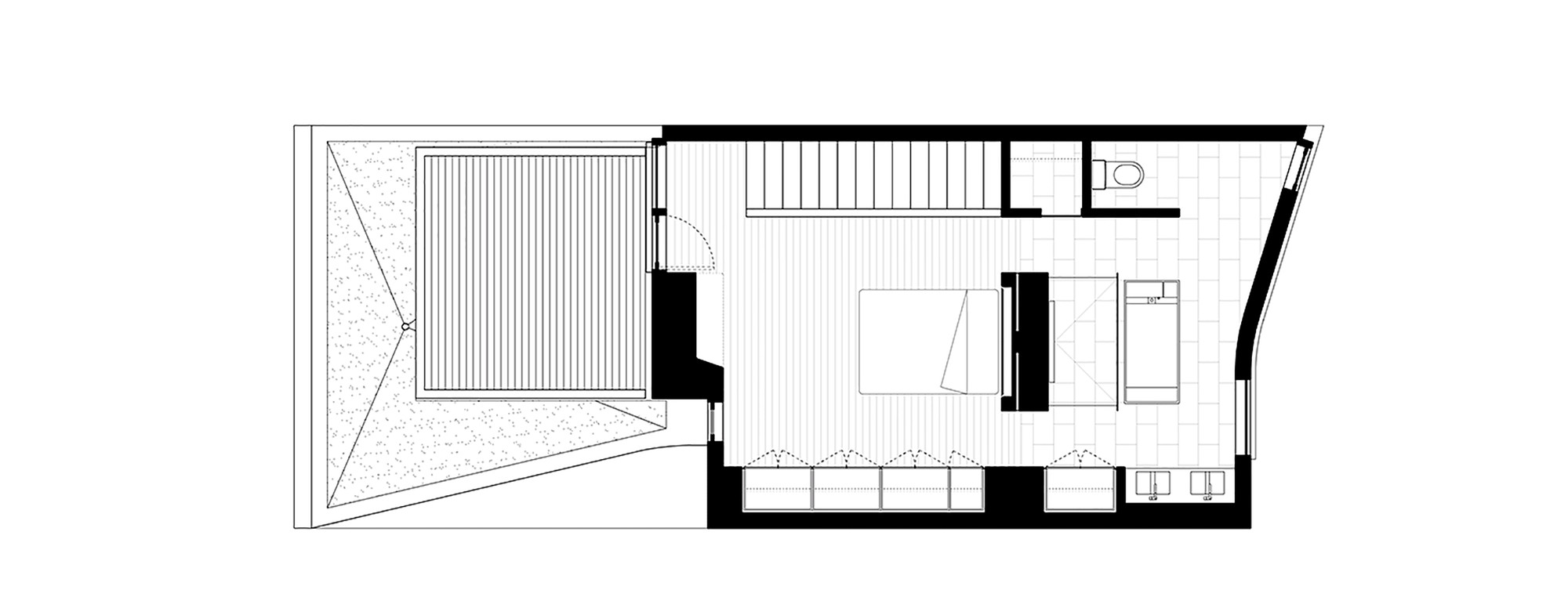The Ravine Residence
设计方:Williamson Chong Architects
位置:加拿大 多伦多
分类:居住建筑
内容:实景照片
图片来源:Bob Gundu
项目规模:207平方米
图片:19张
摄影师:Bob Gundu
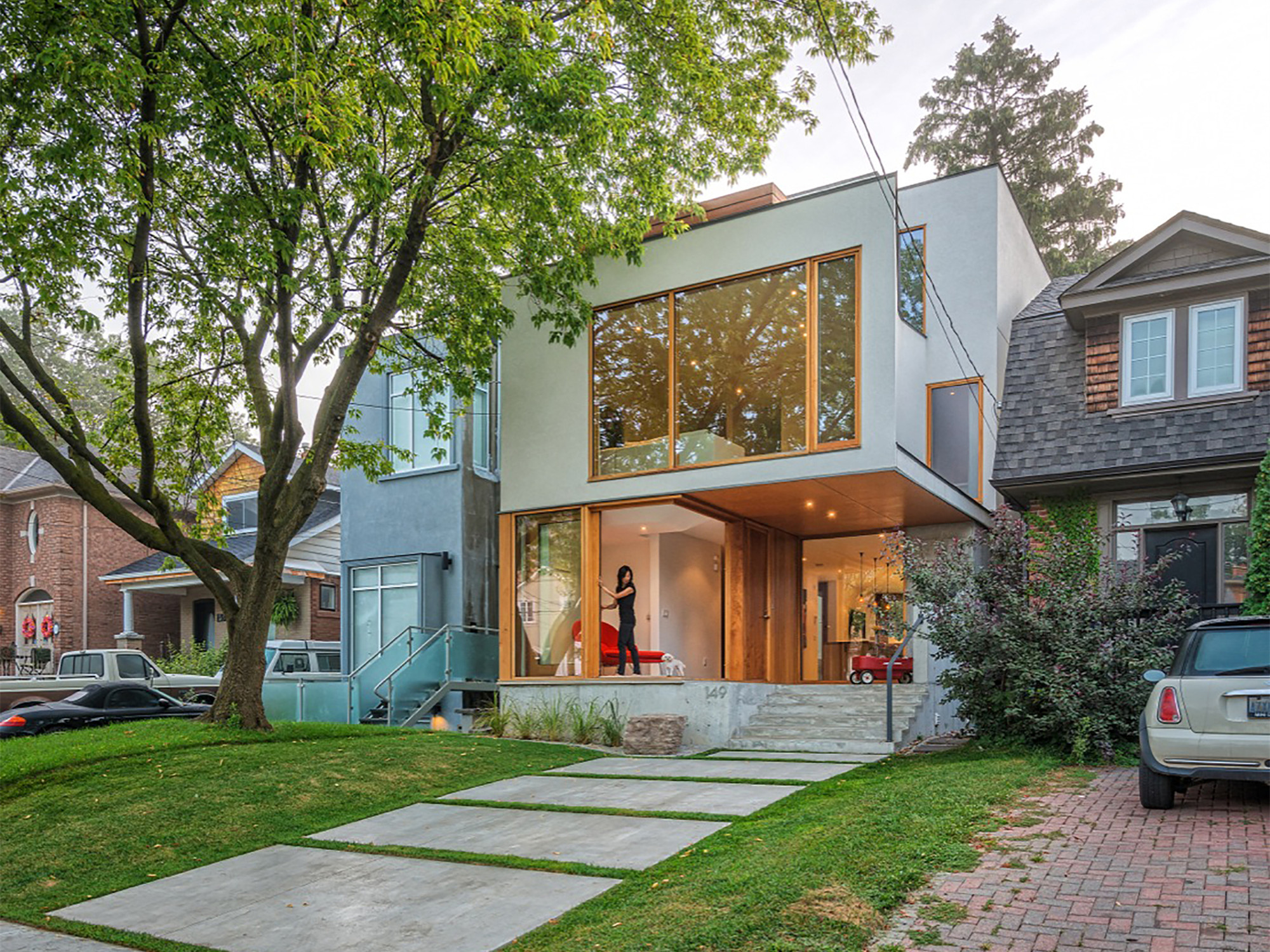

这栋房子位于多伦多,占地约207平方米,附近是工薪阶层的住宅区。房子比较狭窄,屋内有些昏暗,采光不是很好。房子的后院有棵挪威云杉,已经有100年的树龄了,成为一道独特的风景。屋内的厨房有较大的餐桌,客厅靠近门廊,室内的设计比较简约。厨房的空间比较宽敞,采用的是木制建材,打磨过后,看上去整齐有序,轮廓清晰。房间的管道系统、水管装置和卫生设施都是精心设计的。衣柜、餐具室、橱柜、香料架、冰箱和杂物室也都采用的木质材料,壁橱和橱柜能存放很多物品。室内的墙壁也是木质的,整体性很好。
由于厨房的空间很宽敞,这里可以作为工作室,餐桌就相当于工作台。大型的滑动窗能为住户提供开阔的视野,便于通风,还能欣赏屋外的花园景色。主卧室和套间位于上面一层,属于私人空间,房间主体是白色,看上去干净整齐,设计上也很简约,为住户提供安静的居住环境。从这里可以看到外面的绿树、蓝天,甚至是安大略湖的美景。客厅的采光不错,后面是两间儿童卧室,其中的一间相对来说有些昏暗。要想增强室内的采光效果,就要设计大型的窗户,让更多的阳光照射进来。建造时,设计师非常注重保护当地的环境,保护好周围的树木。风格上,房子的都市感十足,简单、典雅,使用的都是耐用的建材,可持续性强。
译者: Odette
From the architect. In Toronto, the Victorian working class neighbourboods provide average lot sizes of 20’ wide by 120’ long. While there is light available on each narrow end, the interior spaces are inevitably quite dark. The site for the Blantyre House presented another restriction. Maintaining the 100-year-old Norway spruce in the backyard became a priority and impacted the programming and form of the house. At 19’ wide and 45’ long, the house is not only narrow, but also shallow.
A primary decision was made to allow the ‘kitchen studio’ with its integrated dining and harvest table to occupy the entire ground floor of the home, forcing the living room to hover above the ground floor porch, and retain its status as a ‘piano nobile’ space.The ‘kitchen studio,’ with its distinctive custom millwork lining, serves as the architectural and emotional center of the home. The custom millwork attempted to consolidate seemingly disparate requirements of the home — namely, mechanical ductwork, plumbing supply and sanitary lines, structural laterally-resistant piers — into a zone that would prevent the already compact 8’-0” clear height ceiling from dropping even further.
The millwork aims to be the running spine which offers an entry closet, pantry, cupboards system, spice rack, appliance garage, refrigerator and broom closet in one continuous plane. Bevel-edged and eased details with recessed profiles identify the key areas for access and provide additional space savings relative to traditional drawer pulls and countertop overhang depths. Thus, the urban conditions were a distinct driver in the form of the kitchens details.
The angled volume cutout that serves as the focal point for the millwork wall was designed to provide the typical working sightlines and reaching angles of any typical kitchen — with the exception that the upper storage would remain flush with the adjacent full-length closets and the lower cabinetry. This design detail followed through on the discovery that we could place the building systems lines behind the uppers without losing performance in cooking functions.
The emergence of this ‘kitchen studio’ aided in the evolution of the countertop and harvest table as a single fixed-piece, thus allowing conversational, preparatory and social conditions to migrate and exchange as effortlessly as possible between the two longitudinal components. With the detailing of the full-height sliding windows, the kitchen studio allows for the seamless flow from street to garden for guests while providing a sure and steady area for cooking and preparation. In some ways, we like to think of this as the ‘front face’ of the home upon entry.
In contrast, the upper most level of the home is the master bedroom and ensuite. Depicted in white with minimal details, this is where the house is most private. Offering quiet and sanctuary from the urban setting, the views are choreographed to provide glimpses of the trees, sky and even to Lake Ontario from the projected volume off the ensuite. This floor is also set back from the front face of the entry and living room volume, allowing the massing to read in scale with the modesty of the remaining homes on the block.
Sandwiched between these two levels is the ‘piano noble’ mentioned above. The light filled living room, overlooking the street, is removed from busy city life and the activity of cooking and dining below. Behind this living area are the two children’s bedrooms, one of which occupies the normally dark middle space between the front and the back of the house. To alleviate this common problem in Toronto’s fabric, the south wall of the living room is chamfered back to bounce light through a large window in the center space. Delineated by a knife edge on the front façade, this move scales the detail developed in the kitchen studio to bring an elegant edge to the cantilevered entry volume.
At the macro level, the biggest sustainable idea is that of infill housing. To increase density in an urban neighbourhood, we actually severed (split) a double-wide single family lot and made it two. Building within an existing neighbourhood on strips of available land, while taking care not to disrupt the native tree canopy, allows us to explore further the pedagogy of ‘incremental urbanism.’ Blantyre House is a repeatable typology that can co-exist with current bylaws and zoning requirements while giving a family urban connectivity, generous spaces, and even sanctuary.Using first principals of through ventilation, resilient materials for longevity, and natural finishes, help this small home engage green building in a straightforward way.


加拿大多伦多住宅外观图


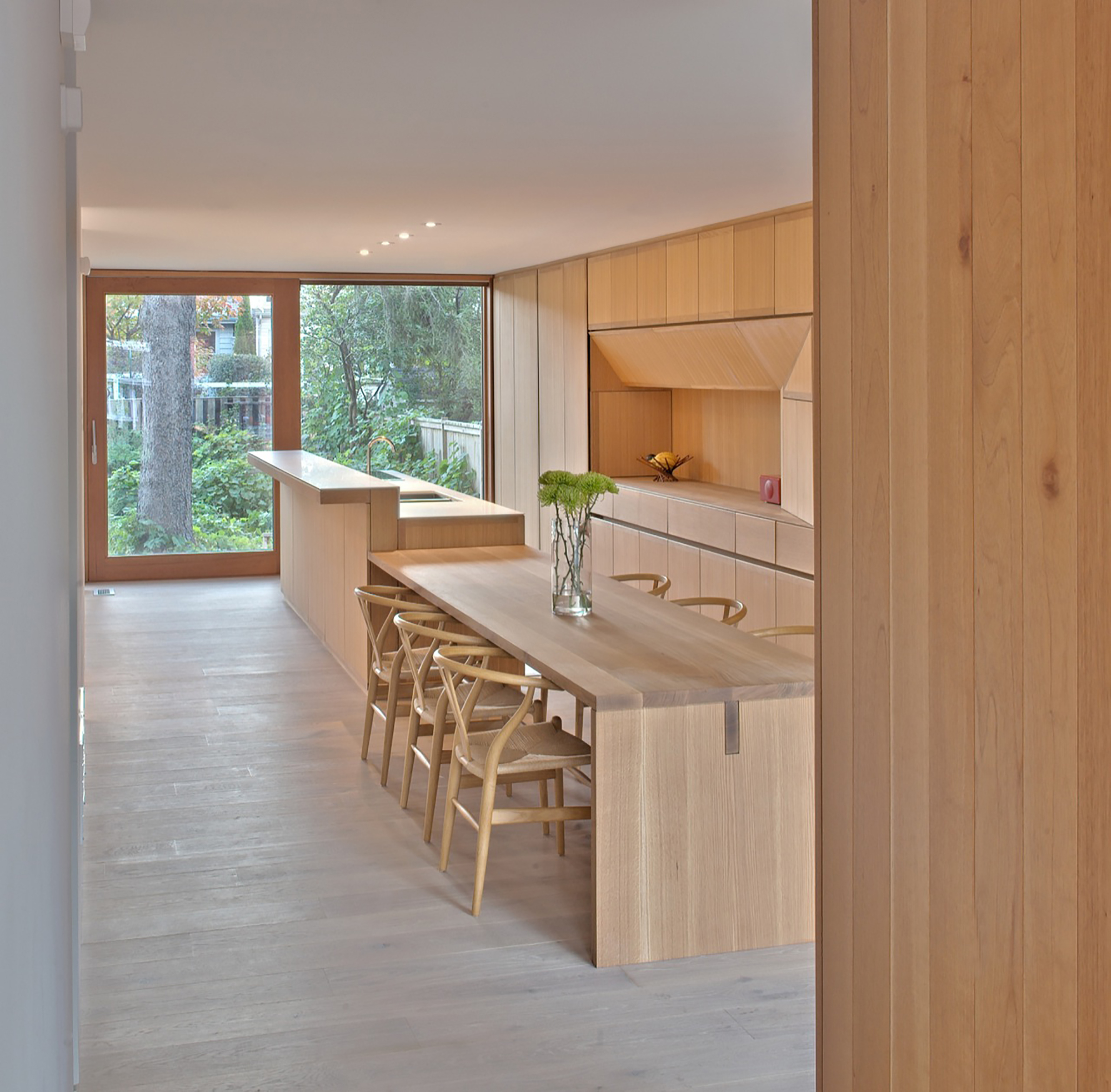

加拿大多伦多住宅内部局部图
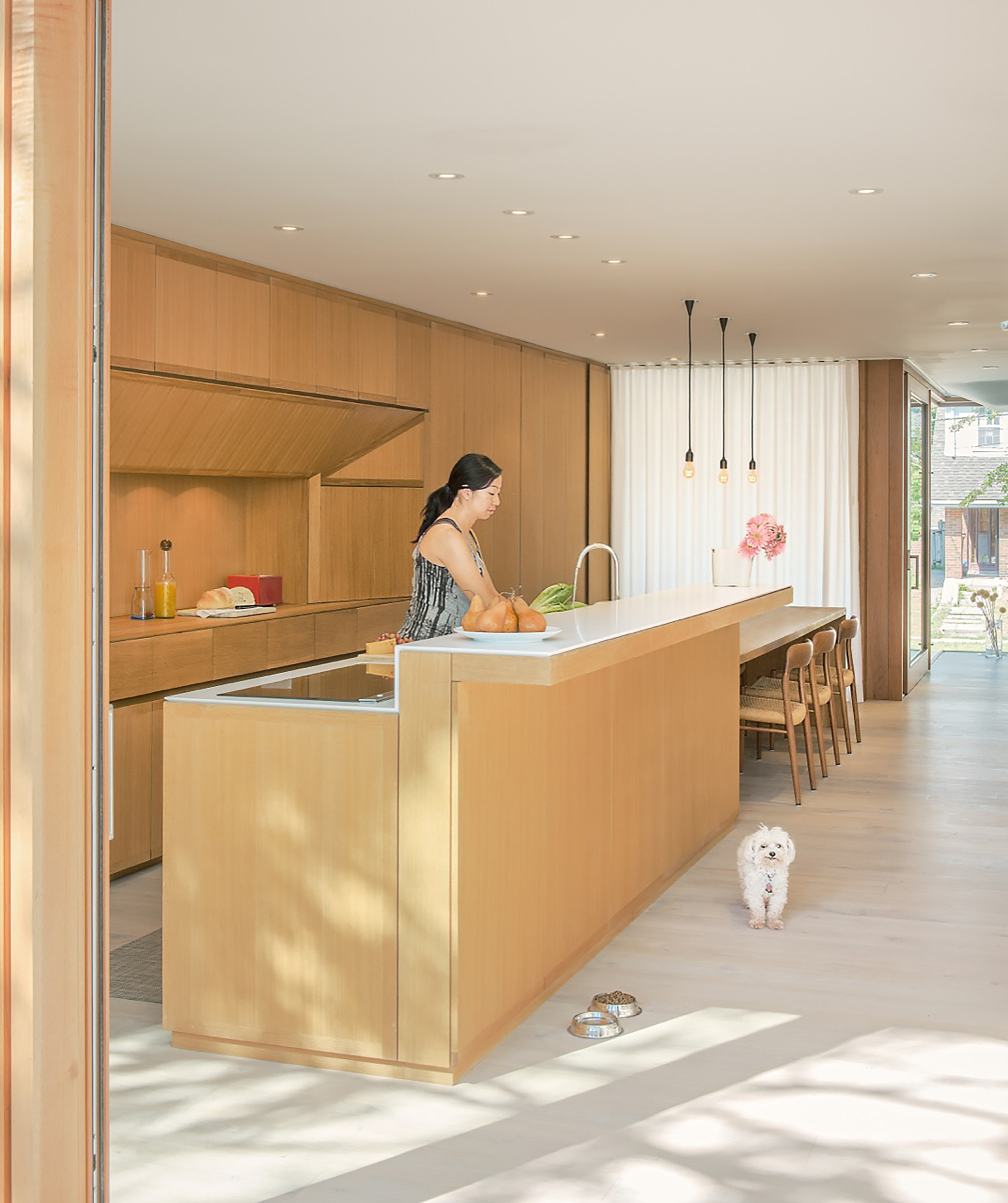

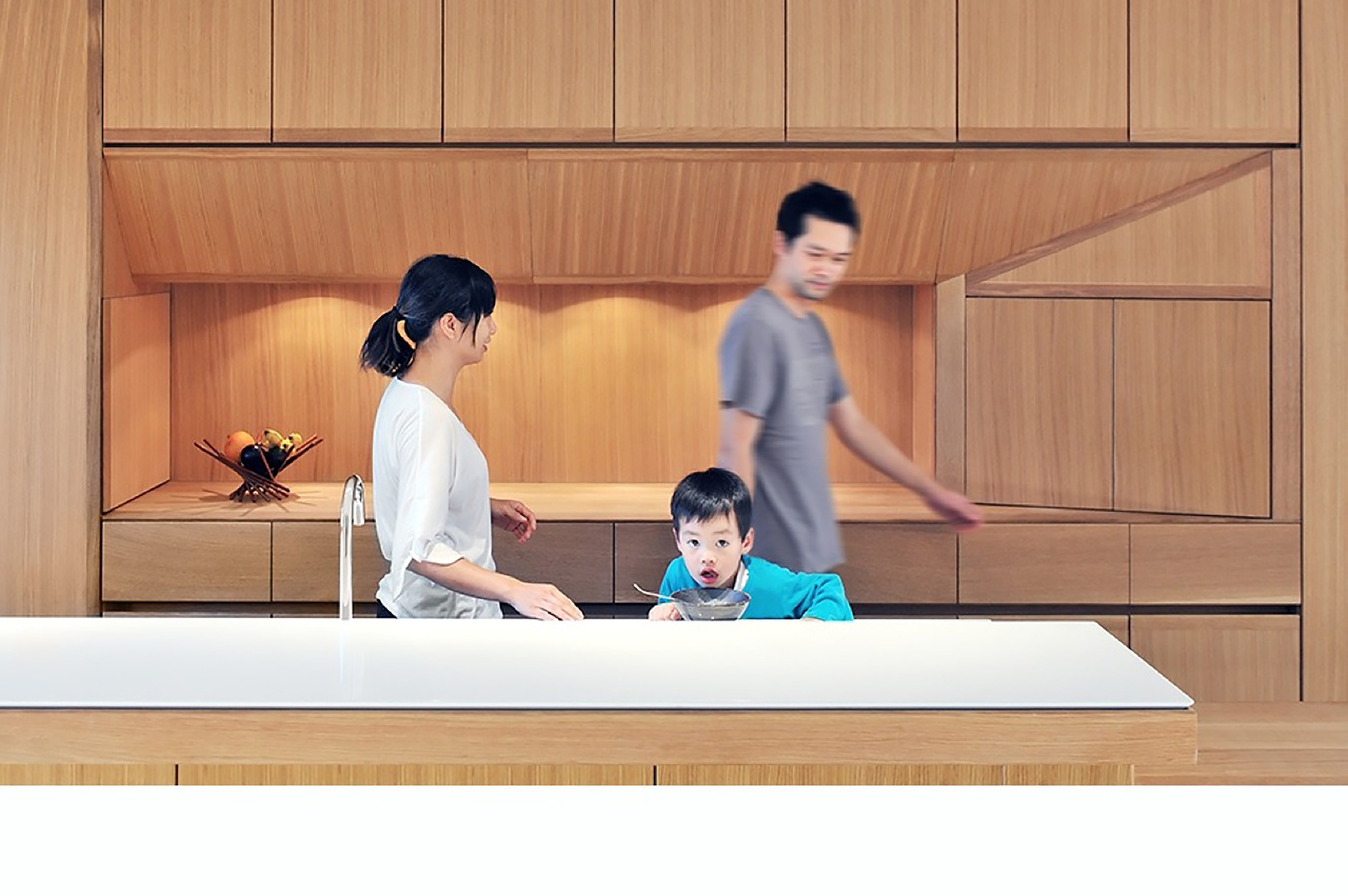

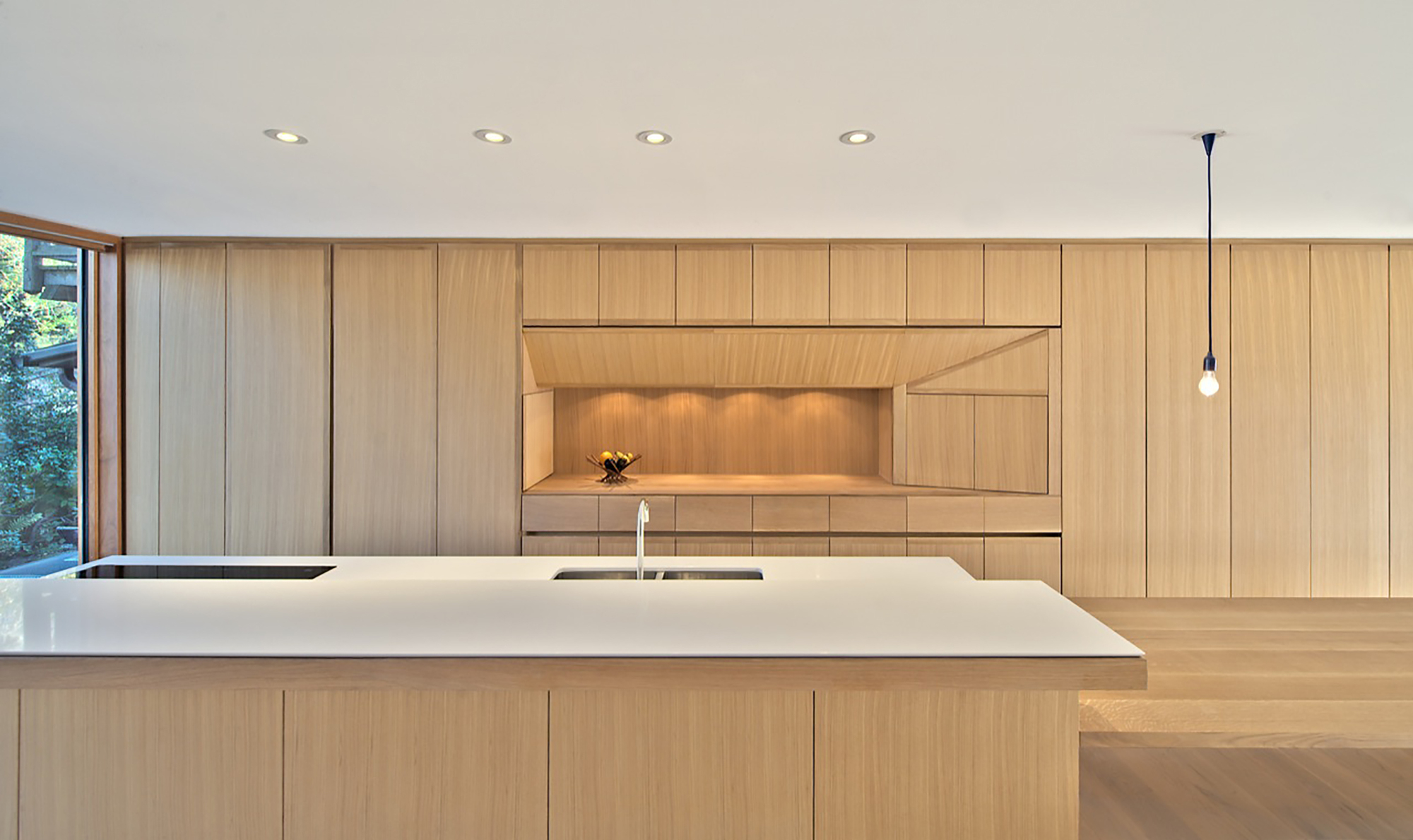

加拿大多伦多住宅


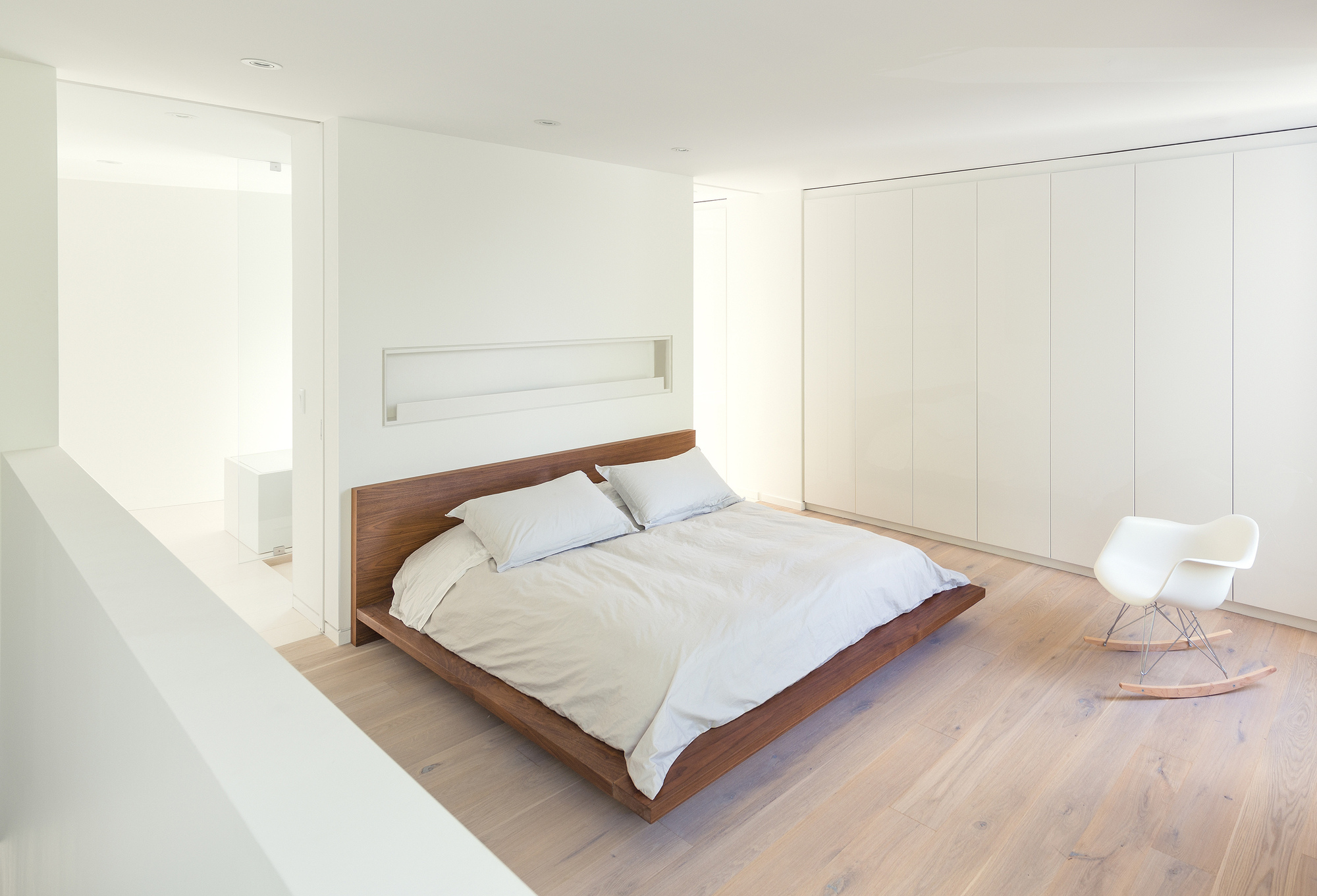

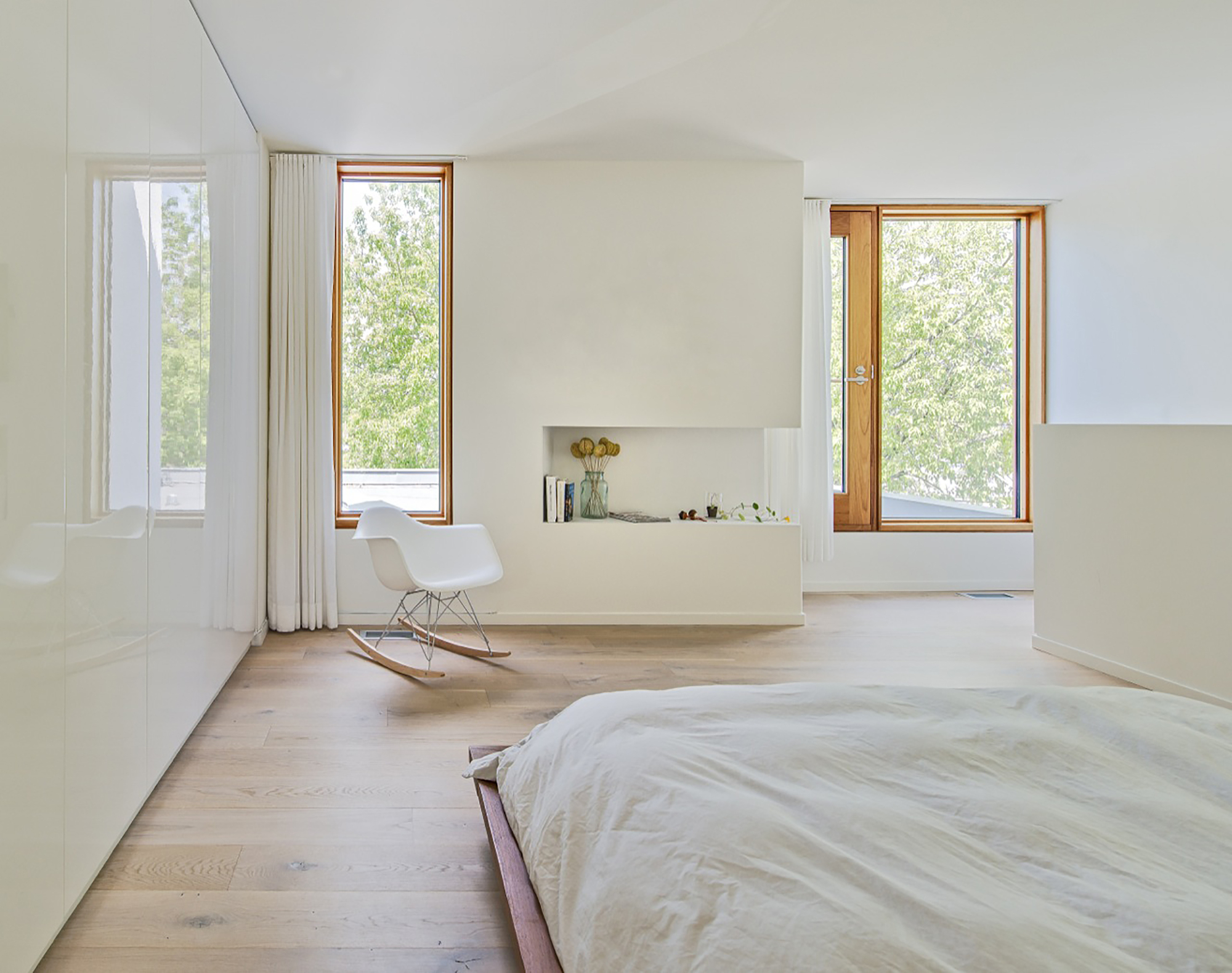

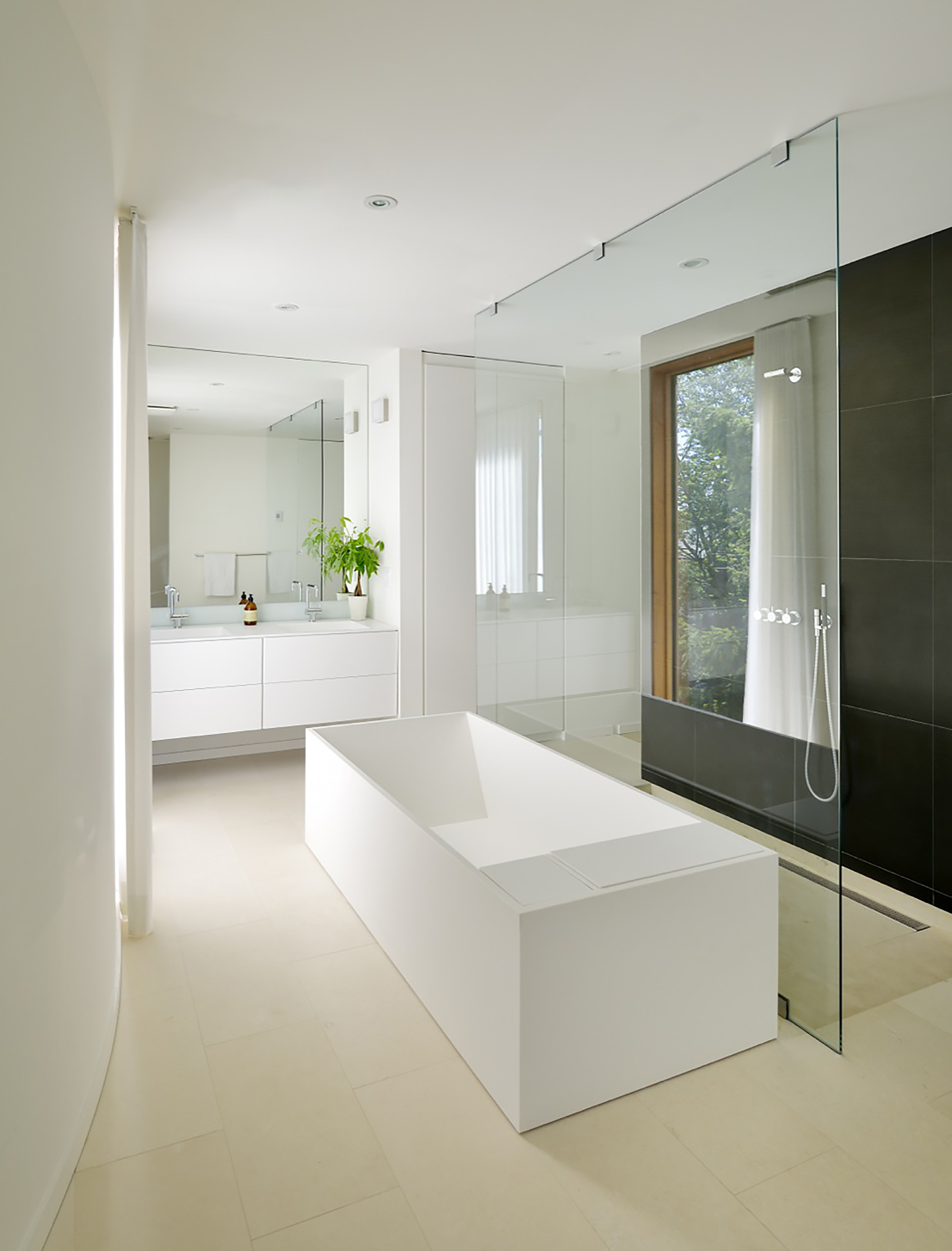

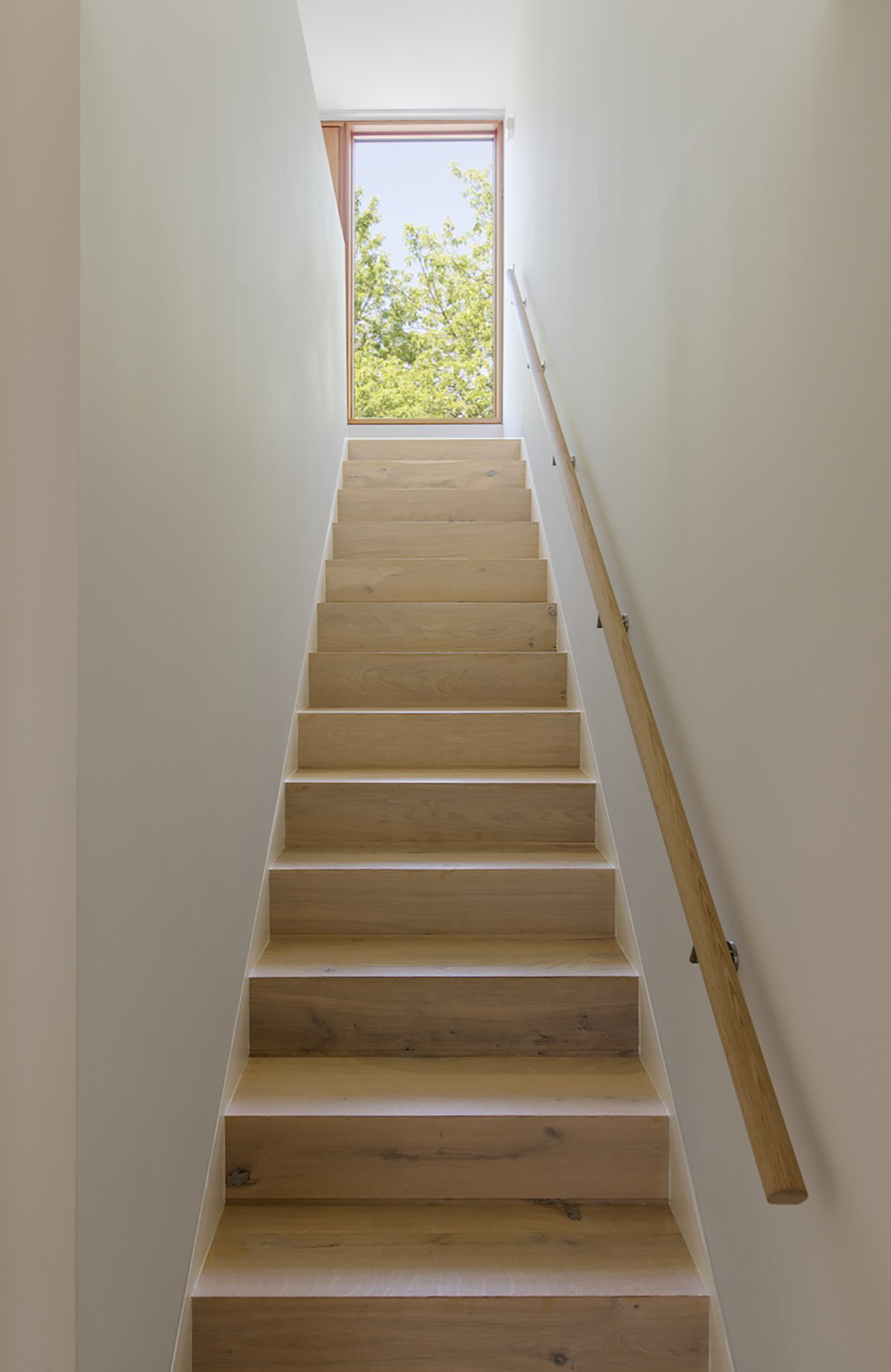



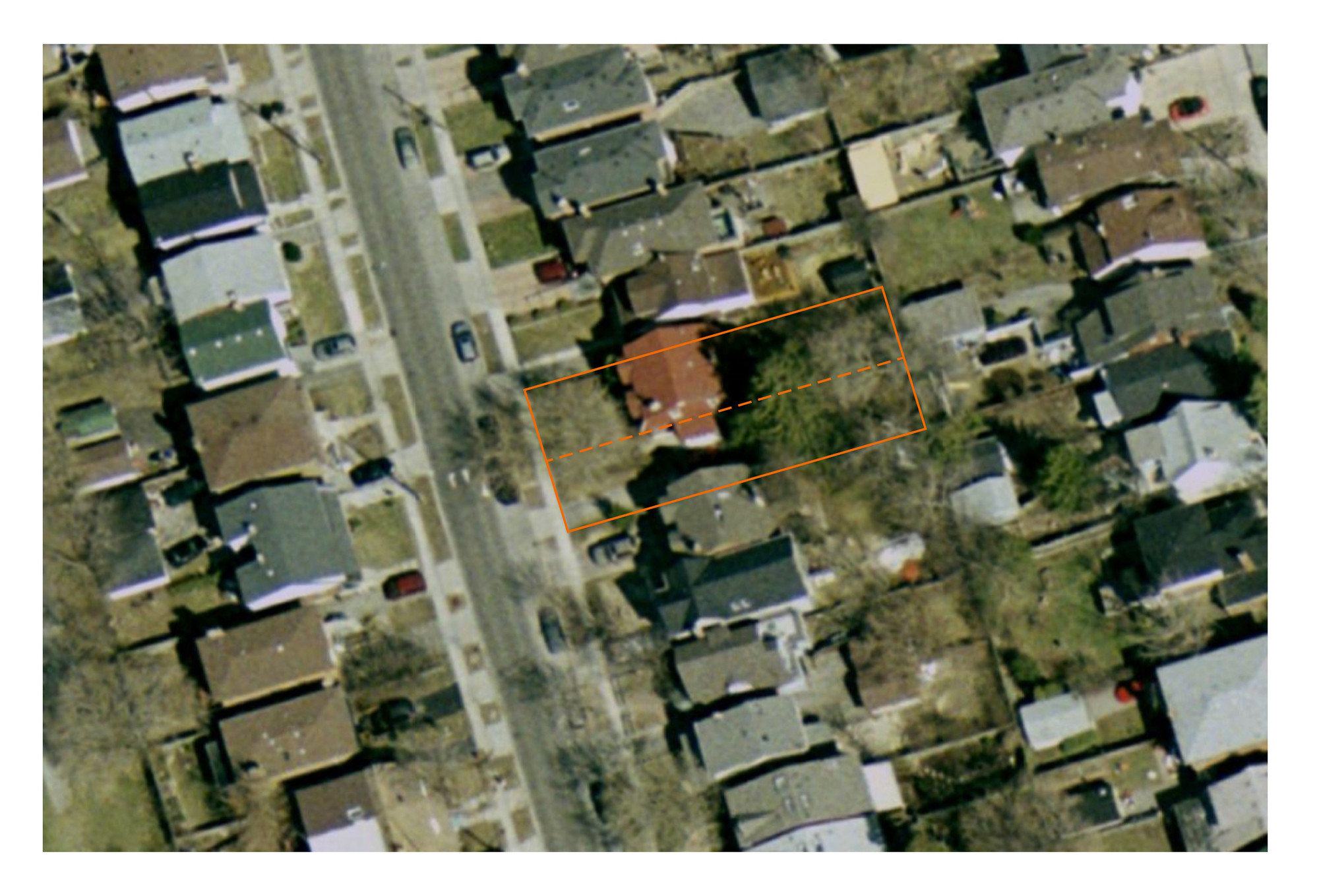

加拿大多伦多住宅图解
